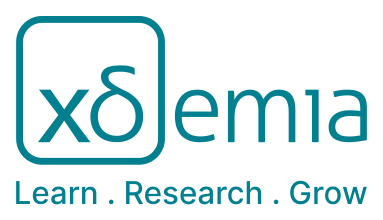Grid Integration of Wind Energy and Fault Ride-Through
10 Enrollments Level : IntermediateRelevance
Wind energy has become a cornerstone of the global renewable energy transition, driven by its scalability and environmental benefits. However, the integration of wind power into modern electrical grids presents technical challenges due to its variability and distributed nature. This document explores the key components and system design considerations for effective wind energy conversion and grid integration. Emphasis is placed on the role of power electronics in enabling flexible and efficient energy conversion, fault ride-through (FRT) capabilities, and compliance with evolving grid codes. It further compares various wind turbine interface technologies - including the Danish concept, doubly-fed induction generators (DFIG), and full converters—highlighting their respective advantages and limitations in the context of offshore and onshore deployment. Additionally, the document outlines AC and DC transmission options for offshore wind farms, discussing emerging technologies such as modular converters and dual-bridge topologies for high-power DC-DC conversion. Together, these insights offer a comprehensive understanding of how to engineer robust, grid-compliant wind energy systems.
Abstract
This course explores the critical role of power electronics, wind turbine interface concepts, and transmission strategies in supporting the stability and scalability of offshore wind systems. Key configurations—Danish, Doubly-Fed Induction Generator (DFIG), and Full Converter—are evaluated for performance and suitability in offshore environments. The focus then shifts to Fault Ride Through (FRT) capabilities, which enable wind turbines to remain connected during grid faults, preventing instability. Techniques such as FRT Containers and Virtual Impedance Emulation are compared for their effectiveness in maintaining grid support during disturbances. Finally, the use of AC and HVDC transmission systems, along with emerging technologies like modular multilevel converters and smart transformers, is discussed as a means to overcome offshore integration challenges. MATLAB/Simulink simulations further demonstrate FRT implementation and grid response, offering practical insights into building resilient and future-ready offshore wind infrastructures. Furthermore, the lecture explores the importance of FRT, its methods of implementation, and its role in enhancing the integration of offshore wind energy into modern power systems.
Learning Outcomes
1 Understand the role of power electronics in wind energy systems, including the relationship between switching frequency and power levels, and how different wind turbine interface concepts (Danish, DFIG, Full Converter) affect grid connectivity and control.
2 Evaluate the suitability of wind interface technologies for various applications—onshore, offshore, small-scale and compare their performance in terms of flexibility, efficiency, and compliance with modern grid codes.
3 Analyze grid integration strategies for offshore wind farms, distinguishing between AC and HVDC transmission systems based on distance, efficiency, and cost, and recognizing the impact of innovations such as MMCs and smart transformers.
4 Explain Fault Ride Through (FRT) requirements and techniques, including the importance of reactive current injection and the role FRT plays in maintaining system stability during grid disturbances.
5 Design and compare FRT testing setups, using both container-based and emulator-based methods, with calculations of short-circuit impedance, SCR, and programmable virtual impedance.
6 Simulate wind turbine grid behavior using MATLAB/Simulink, interpreting voltage sag responses, evaluating reactive current injection, and assessing system resilience in AC/DC grids .
Prior Knowledge
1 Foundational knowledge in electrical engineering, including circuit theory, basic power systems, and electromagnetic machines (e.g., synchronous and induction generators), as well as familiarity with grid operation principles.
2 Basic understanding of power electronics and applied mathematics, including switching devices (IGBTs, MOSFETs), voltage/current waveforms, control systems, and the ability to interpret phasor diagrams, impedance, and per-unit system calculations.
Keywords
- Power Electronics, Wind Energy Conversion Systems (WECS), Grid Integration, Full Converter, Doubly-Fed Induction Generator (DFIG),Fault Ride Through (FRT), Grid Code, HVDC transmission
Elements
1. About this Building Block
Grid Integration of Wind Energy and Fault Ride-Through
2. Exercises
Grid Integration of Wind Energy and Fault Ride-Through: Exercise
Series of exercises that provide a revision and overall summary of the key lecture concepts
Numerical problems consider how a FRT container is designed for a given practical wind energy system
